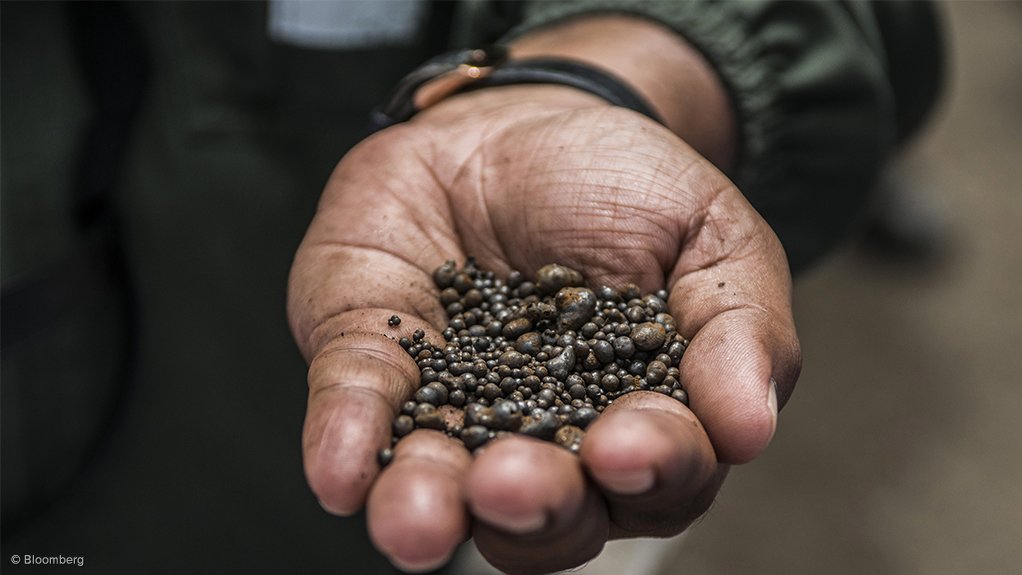VANCOUVER (miningweekly.com) – Toronto-based First Cobalt (FCC) has positioned itself to become the world’s largest cobalt exploration company under pending deals to merge with ASX-listed Cobalt One and acquire fellow TSX-V-listed CobalTech Mining.
Based on FCC's C$30-million market cap, plus the market caps of Cobalt One (C$54.6-million) and CobalTech (C$11.56-million), FCC's market cap would be nearly C$100-million when the deals are completed.
When completed, the deals will consolidate the Cobalt, Ontario mining camp under FCC and give the company control of about 10 000 ha for cobalt exploration and mining.
FCC’s pathway to production is enhanced with this large land package and the company’s control of a mill and a refinery and with permitting in place.
"We believe CobalTech's assets in the Cobalt camp are complementary to our own and see this transaction as an opportunity to provide value to both our shareholders and those of CobalTech,” FCC president and CEO Trent Mell said in a statement.
FCC on Wednesday announced that it had entered a nonbinding letter of intent (LoI) to acquire all of the issued and outstanding shares of CobalTech through a negotiated share exchange transaction.
EXPLORATION PORTFOLIO
CobalTech has assembled a strong portfolio of prospective cobalt properties, including 11 past-producing mines in the town of Cobalt, Ontario, the Werner Lake East cobalt property, near Kenora, Ontario, and eight properties in Quebec.
Its flagship asset is the Duncan Kerr project, which includes the past-producing Kerr Lake and Lawson mines, which operated between 1905 and 1966 and reportedly produced about 32.7-million ounces of silver, as well as significant cobalt by-product.
CobalTech also owns a 100 t/d mill in the town of Cobalt. This asset would complement the Yukon refinery, over which First Cobalt has a joint venture option for a 50% interest.
“The future potential from 11 additional past-producing mines, as well as a milling facility, could provide the pathway to early production in this region. This potential transaction is a credit to the quality assets the team at CobalTech have built,” Mell added.
CobalTech has 6 588 t of crushed stockpile with an average grade of 761 g/t silver and 0.95% cobalt over 2 000 samples on its Duncan Kerr property. The company warned that the potential quantity and grade of this stockpile is conceptual in nature.
Under the terms of the LoI, Cobalt One shareholders would own 60% of the merged entity and FCC shareholders would own the remaining 40%; the merged entity would be based in Toronto, a five-hour drive from the Cobalt mining camp; FCC would maintain its TSX-V listing and seek to obtain a secondary listing on the ASX of Dhess Depositary Interests; and it would be a condition of the transaction that the boards of the merged entity would include Cobalt One chairperson Paul Matysek, FCC CEO Jason Bontempo, as well as Bob Cross and some or all of the current FCC board members.
FCC said the LoI provides both parties the opportunity to exchange information and maintain confidentiality as each party seeks to determine whether mutually beneficial business opportunities may exist. The LoI does not represent a change of business for either company.
The LoI also does not contemplate a definitive agreement between the parties. FCC has engaged Canaccord Genuity as financial adviser and Cassels Brock and Blackwell as legal adviser on any transactions entered into by the company.
FCC's projects also include interests close to several major copper/cobalt operations in the Central African Copperbelt, in the Democratic Republic of Congo.
IN DEMAND
Cobalt is an increasingly important energy metal for use in many consumer products, including electronics, electric vehicles and grid energy storage applications.
According to information provided by London-based analysts Benchmark Mineral Intelligence, the cobalt market is expected to rise from about 45 000 t in 2016, to between 80 000 t and 170 000 t by 2025 – up nearly 300%. The firm expects cobalt prices to remain high and perform well out to 2020, as demand will lead supply to 2025, and new projects coming on line will not be enough to create an oversupply.
Analyst Caspar Rawles told an audience in Vancouver recently that he foresees a greater supply deficit in the early 2020s than in 2007/8, when the deficit was about 9 000 t, which caused prices to spike by more than $50/lb.
However, S&P Global Market Intelligence director for reports on the metals and mining sectors Dr Chris Hinde stated on Wednesday that, although the price of cobalt is expected to rise more than 53% in 2017 over 2016, to about $17.75/lb, the cobalt price is expected to be lower in 2018 and 2019.
FCC’s TSX-V-listed stock climbed more than 30% on Wednesday and Thursday, to C$0.69 apiece.
Edited by: Creamer Media Reporter
EMAIL THIS ARTICLE SAVE THIS ARTICLE
ARTICLE ENQUIRY
To subscribe email subscriptions@creamermedia.co.za or click here
To advertise email advertising@creamermedia.co.za or click here













